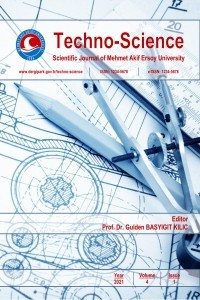Comparative Analysis of Raffia Palm Seeds Extracts and Duckweed as Disinfectant in Water Treatment
Comparative Analysis of Raffia Palm Seeds Extracts and Duckweed as Disinfectant in Water Treatment
This study compares Raffia hookeri seeds extracts and LemnaTrisulca (Duckweed) as disinfectant in water treatment. Raffia hookeri and duckweed were obtained within Makurdi, Nigeria. While the raw water samples were taken from River Benue for the study. Laboratory analysis was carried out using dosage, pH, temperature, initial concentration, and flocculation speed as variables. Filtrate and powder from Raffia hookeri and LemnaTrisulca were used. The result revealed that extracts from the filtrates at 0.3 ml concentration gave the optimum, removing 98.2% and 82.9 % of bacteria for Raffia hookeri and duckweed respectively. For the powder, optimum conditions with respect to bacteria removal were; Dosage = 0.2 ml, pH = 3, Temperature = 30 °C, Initial concentration = 633 FTU and flocculation speed =90rev/min with average percentage removal of 91.1 % and 83.7 % for Raffia hookeri and Duckweed respectively. In conclusion, filtrate obtained from Raffia hookeri gave a greater removal of bacteria for disinfection of water.
Keywords:
Raffia Palm Seeds Duckweed, Disinfectant, Extracts,
___
- [1]. Agunwamba, J.C. (2000). Water Engineering Systems. Immaculate Publishers Ltd, Enugu.
- [2]. Casey, T. J. 1997; Unit treatment process in water and wastewater Engineering. John Willey and sons.
- [3]. American Water Works Association (1990). Water Report, Water Quality and Treatment. A handbook of water supplies. McGraw Hill publishing company, 4th edition, New York.
- [4]. Bove, F., Shim, Y., and Zeitz, P. (2002). Drinking Water Contaminant sand Adverse Pregnancy Outcome: A review. Environ. Health perspective. 110 (suppl.): 61-74.
- [5]. Metcalf and Eddy, Inc. 2003; Water Engineering: Treatment and Reuse. Tata McGraw-Hill companies.
- [6]. Kalibbala, H. M. (2007). Application of Indigenous Materials DrinkingWater. Licentiate Thesis, Royal Institute of Technology (KTH), Stockholm, Sweden.
- [7]. Mahvi, A. H. and Razavi, M. (2005). Application of Polyelecrolyte In Turbidity Removal From Surface Water. American J. Applied science 2(1): 397-399.
- [8]. Conte, M., Aliberti, F., Fucci, L., Piscopi, M. (2007). Antibacterial activity of various cationic molecules on food borne pathogens. World J Microbiol. Biotechnol. 23:1679-1683.
- [9]. Woo, Y. T., Lai, D., McLain, J. L., Manibusan, M. K., Dellarco, V. (2000). Use of Mechanism-Based Structure-Activity Relationships Analysis in Carcinogenic Potential Ranking for Drinking Water Disinfection By-Products. Environ. Health Perspect. 110 (suppl. 1): 75-87.
- [10]. Tokmak, B., Capar, G., Dilek, F. B., Yetis, U. (2004). Trihalomethanesand Associated Potential Cancer Risks in Water Supply in Ankara, Turkey. Environ. Res. 96: 345-352.
- [11]. Gordon, M. F., John, G. C and Daniel, A. O. (1968); Water Purification And Wastewater Treatment And Disposal.
- [12]. Kiely, G. (1997). Environmental engineering. McGraw-Hill publishing company, U.K. Chapter 11, pp 437-429.
- [13]. Sadiq, R.and Rodrigues, M. J. (2004). Disinfection by-Products (DBPs) in Models for Drinking Water and Predictive their Occurrence. A review. Science of the Total Environment. 32: 21-46.
- [14]. Jahn, S. A. (1988). Traditional Water Clarification Methods UsingScientific Observations to Maximize Efficiency. Waterlines, 2(3): 27-28.
- [15]. Schultz, C. K., Okun, D. A. (1984) Surface Water Treatment for Communities in Developing Countries. John Wiley and Sons.
- [16]. Eilert, U., Wolter, B., Nahrstedt, A. (1981). The antibiotic principle of seeds of Moringa stenopetala Plantamedica: J. Medicinal Plants Research, 42: 55-61.
- [17]. Edem, D. O., Eka, O. U and Ifom, E. T. (2003). Chemical Evaluation of the Nutritive Value of the Raffia hookeri Calabar.
- [18]. Landolt, E, and Kandeler, R. (1987). Biosystematic Investigations on The Family of Duckweeds (Lemnaceae) Published in the Veroffent lichungen Des Geobotanischen Instituties Der ETH, Stiftung Rübel, Zürich. Vol. 3, pp 158-160.
- [19]. APHA (1998). Standard methods for examination of water and wastewater 20th ed. American Public Health Association, AWWA, WPCF, Washington D.C.
- Yayın Aralığı: Yılda 2 Sayı
- Başlangıç: 2018
- Yayıncı: Burdur Mehmet Akif Ersoy Üniversitesi
Sayıdaki Diğer Makaleler
The Future of Fossil Energy Sources and The Change of Global Energy Policies
Beste ŞİMŞEK, İhsan PENÇE, Muhammed Yasin NAZ, Afşin GÜNGÖR
Experimental investigation of photovoltaic panel surface temperature at various tilt angles
Ataollah KHANLARI, Adnan SÖZEN, Ceylin ŞİRİN, Yaşar Can BİLGE, Azim Doğuş TUNCER, Afşin GÜNGÖR
Finite element analysis of various composite honeycomb cores under tensile loading
Comparative Analysis of Raffia Palm Seeds Extracts and Duckweed as Disinfectant in Water Treatment
Joseph UTSEV, Gabriel APKEN, Oloche EKWULE
Chaotic Charged System Search Algorithm
